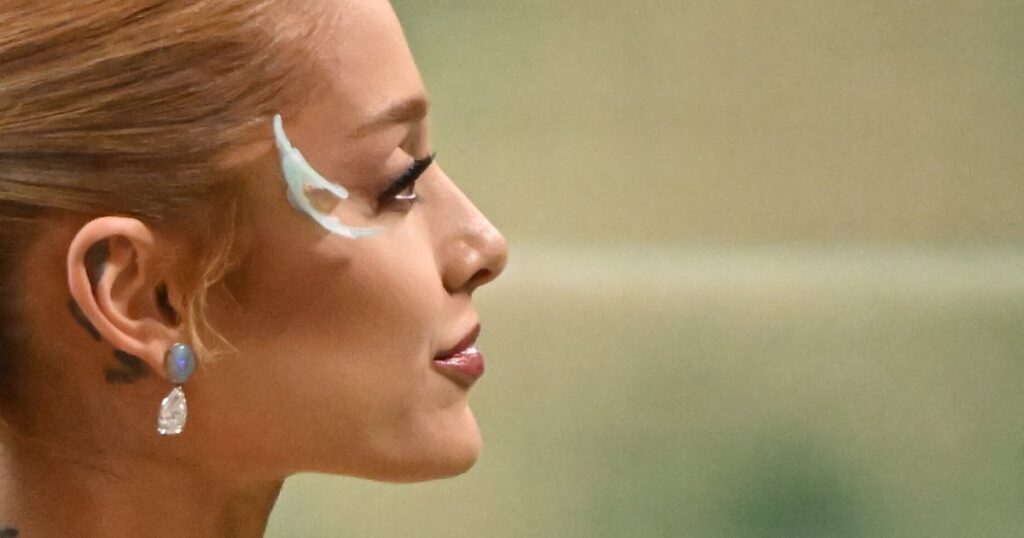🔴 Website 👉 https://u-s-news.com/
Telegram 👉 https://t.me/usnewscom_channel
According to chiropractors, a certain go-to hairstyle could be doing more than looking cute.
It’s quick, easy and requires little-to-no hairstyling skills, but if you’ve been dealing with tension headaches, neck pain or poor posture, your high ponytail could be to blame.
“While tight hairstyles may seem like a minor habit, their cumulative effect on spinal health, muscle balance and neurological function can be significant,” said Sherry McAllister, president of the Foundation for Chiropractic Progress.
Ahead, chiropractors explain why this seemingly innocent style could be wrecking your neck — and what you can do to minimize the damage without giving it up entirely.
Are ponytails bad for your neck?
While ponytails aren’t inherently bad for your neck, high, tight ponytails can cause issues — especially when worn frequently.
The average human head weighs about 10 to 12 pounds, and even small changes in head position can dramatically increase the load on your neck muscles and spine. High, tight ponytails pull the scalp and hair upwards and backward, “which creates tension on the fascia (connective tissue) of the scalp,” said Liza Egbogah, a chiropractor and osteopath. “This fascia is continuous with the muscles of the neck and upper back, and can become tight and strained as a result of tension on the fascia.”
A high, tight ponytail can also affect posture and alignment in the cervical spine. This is because in order to reduce the ponytail-induced tension at the scalp, you may be subconsciously changing your head positioning and moving your head forward, which means “the head slowly begins to shift from being in line with the shoulders to being in front of the shoulders,” Egbogah said. “This forward head posture puts pressure on the cervical spine and, over time, can lead to a stiff neck, pain in the upper and mid-back, tension headaches, rolled forward shoulders and a hunched upper back.”
One thing to note is that if you wear high, tight ponytails often, it can create chronic tension on the scalp and neck muscles, which can set you up for chronic tension headaches, McAllister said. “Chiropractors often see patients with seemingly unrelated symptoms (like dull headaches) that are traced back to cumulative tension such as hair being pulled back too tight,” she added.
Finally, wearing a tight, high ponytail can also impact the nerves in your scalp and neck, particularly if the style creates excessive pressure or tension over time. “A tight hairstyle can cause the muscles at the base of the skull and upper neck to tighten up and compress the nerves running through them, which can cause tingling down the neck and/or into the upper shoulders,” Egbogah said.
It can also affect your face.
Other than posture, cervical spine alignment and tension, a high, tight ponytail can also affect the jaw. “Since the fascia of the scalp is continuous with the jaw, this hairstyle can also cause jaw muscles to tighten up, leading to jaw pain and temporomandibular joint (TMJ) issues,” Egbogah said.
This is because hair that’s pulled back too tightly can create pressure on the temporal region, where some of the muscles involved in jaw movement are located. This can lead to tightness in the key muscles in this area that are responsible for chewing and jaw function, potentially causing jaw soreness, clenching or headaches that feel like they originate from the temples.
How to tell if your ponytail is to blame for your pain:
If you’re experiencing head, neck or jaw pain and suspect your ponytail might be to blame, there are a few key signs that can help you tell if your hairstyle is the culprit. For one, if your discomfort lessens once you loosen the style or take your hair out, that could be a sign it’s hairstyle-related. Also, if your scalp feels tender — especially near the base of the skull or behind the ears — or there is a pulling or burning sensation where the hair is tied, it’s likely due to your hairstyle, Egbogah said.
You can keep wearing a ponytail, but without the side effects.
The good news? You don’t have to forgo this hairstyle for good. McAllister suggested using a fabric scrunchie, as they “allow the hair to slip a little, thus reducing the tension on the hair being pulled back,” she said. Also, avoid sleeping with a ponytail to alleviate tension on the hair follicles and scalp.
If you’re struggling with pain, you can try some at-home stretches for relief. A chin tuck, as recommended by McAllister, can help retrain your cervical alignment — simply straighten your back, tuck your chin, hold for five seconds and repeat 10 times.
Egbogah said a pectoral stretch helps open up the pectoral muscles and drops the shoulders, thus easing neck tension and correct forward head posture. To do this, interlock your hands behind your back, keeping your arms straight while pulling your hands down towards the ground. Squeeze your shoulder blades together and hold for five seconds. “You should feel a comfortable stretch through your chest,” Egbogah said.
